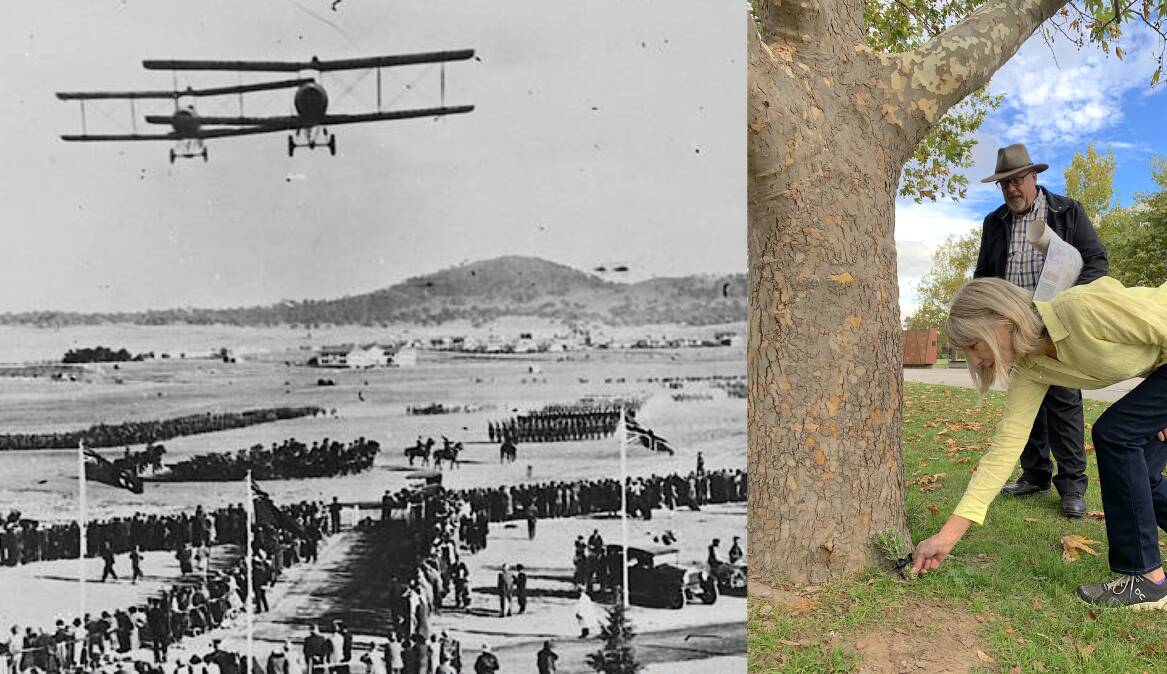
Ask any two Canberrans where pilot Francis Ewen crashed at the opening of Provisional (Old) Parliament House (OPH) on May 9, 1927, and you'll get three different answers.
The most common responses, usually delivered with very little confidence, are "Oh, wasn't it near the later site of the Edmund Barton Building on Kings Avenue?" or "I think it was in the middle of where the lake now is". Some paranormal aficionados have even tried to convince me that his plane nose-dived into the ground where the National Library was later built, and where his ghost supposedly lurks in the basement.
Thankfully, new research undertaken by two Canberra history hounds - Tony Maple and Susan O'Leary - who form part of an informal group, the Canberra and Region Heritage Researchers, have narrowed down the exact spot of the crash within a few metres.
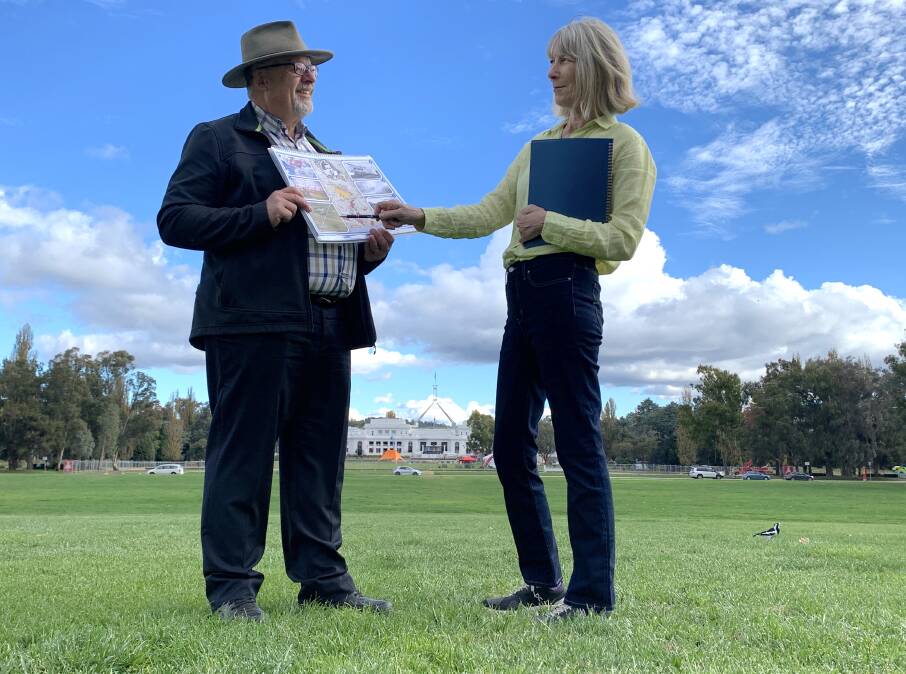
During the morning of that fateful day, Ewen flew in the aerial escort for the Duke and Duchess of York from Government House to OPH. Apart from their continual loops over the Parliamentary Triangle, which inadvertently drowned out the dulcet tones of Dame Nellie Melba singing the national anthem on the front steps of OPH, the morning fly-over went off without a hitch.
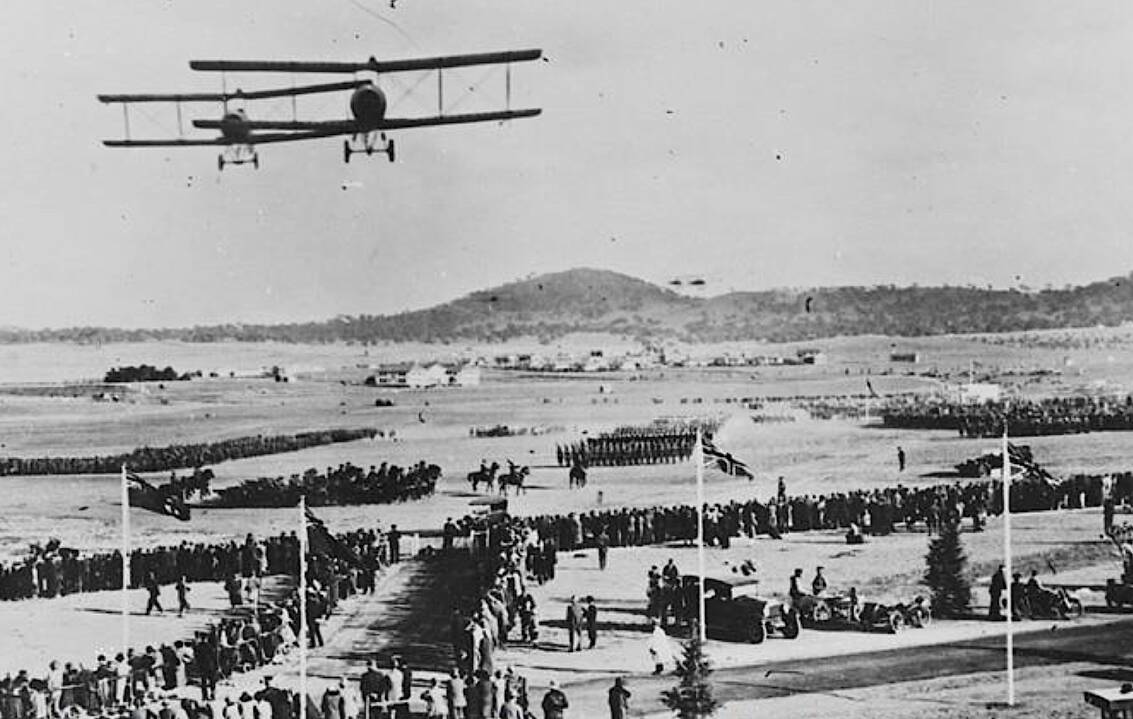
But it was in the afternoon when the planes were out for a second time, that Ewen's A2-24 fell from the formation and nose-dived into the ground at 3.20pm, fatally wounding the Duntroon graduate.
Tony and Susan recently invited me for a stroll around the Parliamentary Triangle so they could reveal to me the findings of their research.
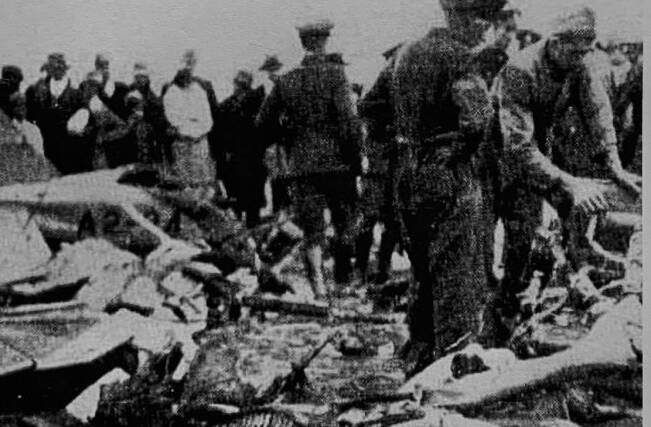
"There were many different observations of the crash reported that day, most made by people not familiar with Canberra landmarks, so the trick was to identify the most reliable eyewitnesses," explains Tony, who leads me to the north-eastern wall of the main Questacon building.
"Extending from here and over the land now covered by part of Questacon, refreshment tents had been temporarily set up for members of the Young Women's Christian Association to watch the festivities.
"The most reliable information about the crash location was reported by a trained observer - a detective sergeant standing on the balcony of the former Hotel Wellington (on the corner of National Circuit and Canberra Avenue) who described the plane's movements and rapid descent to a point behind OPH."
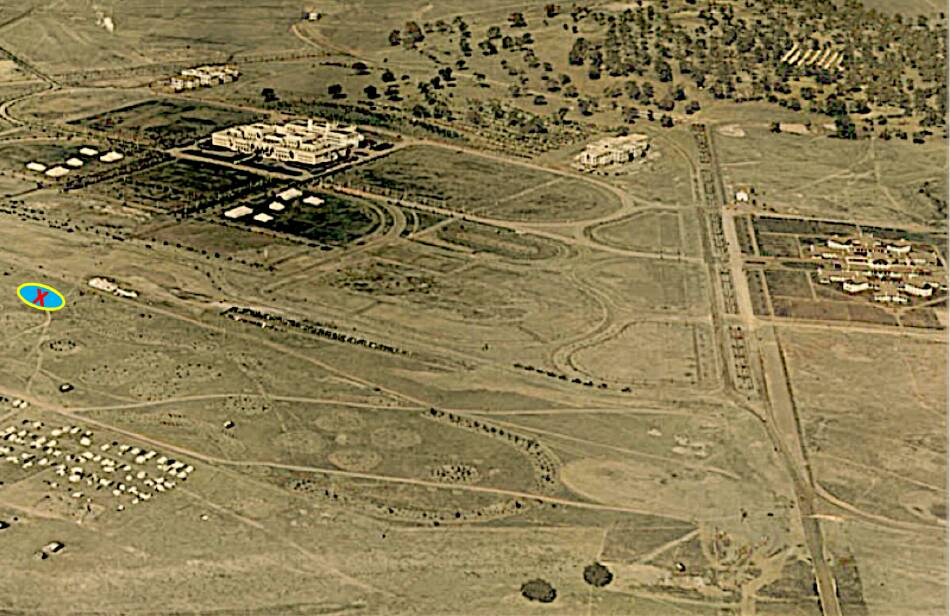
Tony also used other "official observations that it crashed 50 to 60 yards [45 to 55 metres] from the YWCA tents on the OPH side of the brow of Corkhill [since levelled]" to triangulate the crash location.
"Tents feature a lot in the story because we spent hours of research trying to work out which tent was which," explains Tony, showing me a folder overflowing with historical maps, sketches and plans he and Susan used to narrow down the exact spot with a reasonable level of confidence.
The pair then step-out 55 yards in the direction of the brow of former Corkhill.
We stop just near the Methalu Tharri (Smooth Sailing) artwork at Reconciliation Place on the Enid Lyons Walk where Tony points to the ground and announces, "With the available information, we can say with a high degree of confidence that Ewen crashed within a 20-metre radius of here."
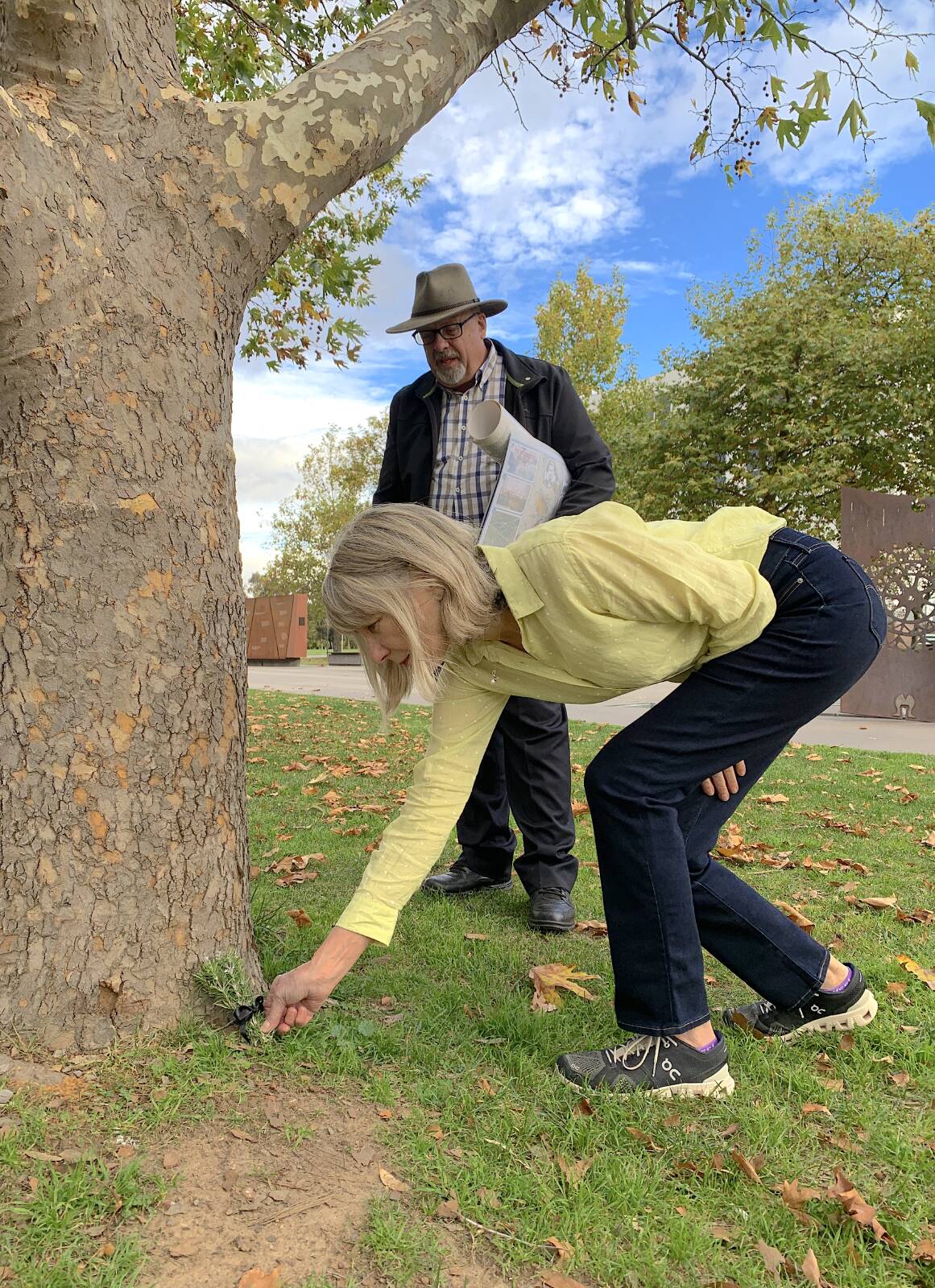
We pause for a minute's silence in the poor pilot's memory before Susan reveals that Ewen's crash wasn't the only one involved with the Duke and Duchess' visit to Australia.
"Ewen was in fact the fifth airman to die in the presence of the Duke and Duchess in three weeks - four of Ewen's mates died when their planes collided during a RAAF fly-past in Melbourne to welcome the royal couple."
Putting the crash further into perspective, Ewen was the 17th RAAF airman to be killed in a plane crash in the previous seven years. Little wonder the RAAF was nicknamed the "Suicide Club".
One crash very pertinent to this story occurred when the planes were being flown up from Point Cook to Canberra to prepare for the OPH opening.
"At Cootamundra, one of the planes blew a tyre on landing and somersaulted, breaking a wing. It was patched up, declared airworthy and flown to Canberra," explains Susan, adding "this was Ewen's plane, A2-24."
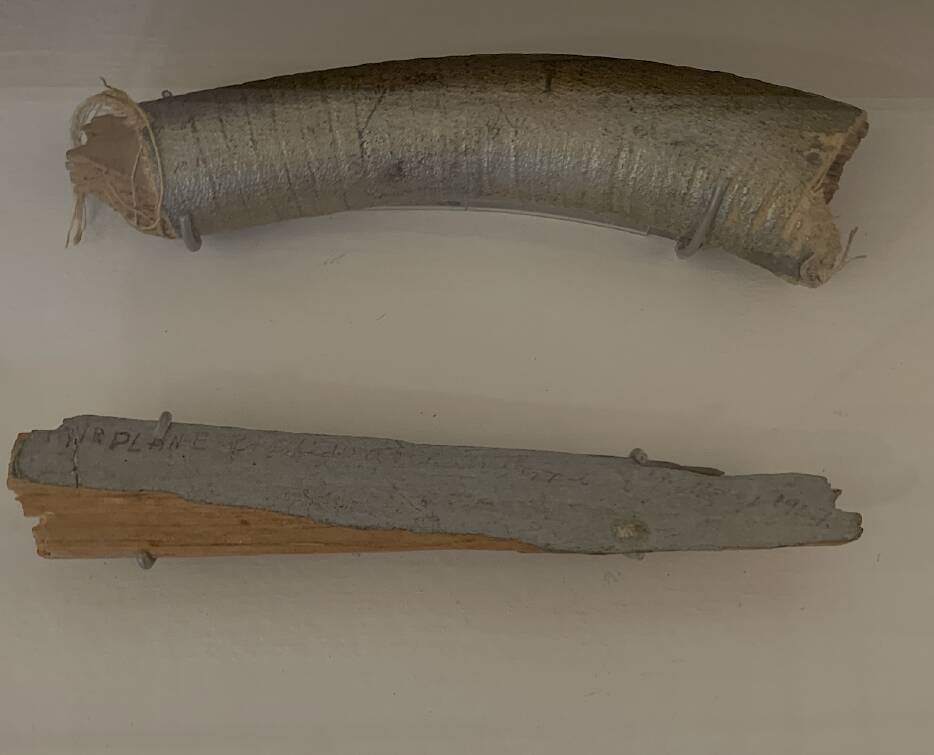
Mishaps like this were largely kept from the prying eyes of the press, but the pilots, of course, knew about them and it no doubt made some nervous. In fact, a letter penned by William Glover of the Melbourne University Rifles group to his parents after attending the OPH opening, and now squirrelled away in the ACT Heritage Library, reveals Ewen had a premonition he'd die at the opening.
"In the afternoon ... there was the military, naval and air review - a magnificent site only spoilt by the distressing air accident," wrote Glover. "A strange thing that the night before, the airman Ewen, had the feeling that something was going to happen and went round and bade goodbye to all his friends in our camp."
"While his death was acknowledged as a terrible tragedy by the shocked political and military leaders and the royals, sadly the crash has become a postscript to the glamorous events of the day," says Susan, who along with Tony believes Francis Ewen deserves to be remembered for his sacrifices on such a significant day in our nation's history.
You won't find any arguments with that plea from this columnist. Perhaps a plaque could be erected near the crash site to coincide with the 100th anniversary of Ewen's death, on May 9, 2027.
For more, including the findings of several inquests into the crash, check out Susan's website at historysnoop.com/air-fatality-in-canberra/
The grave
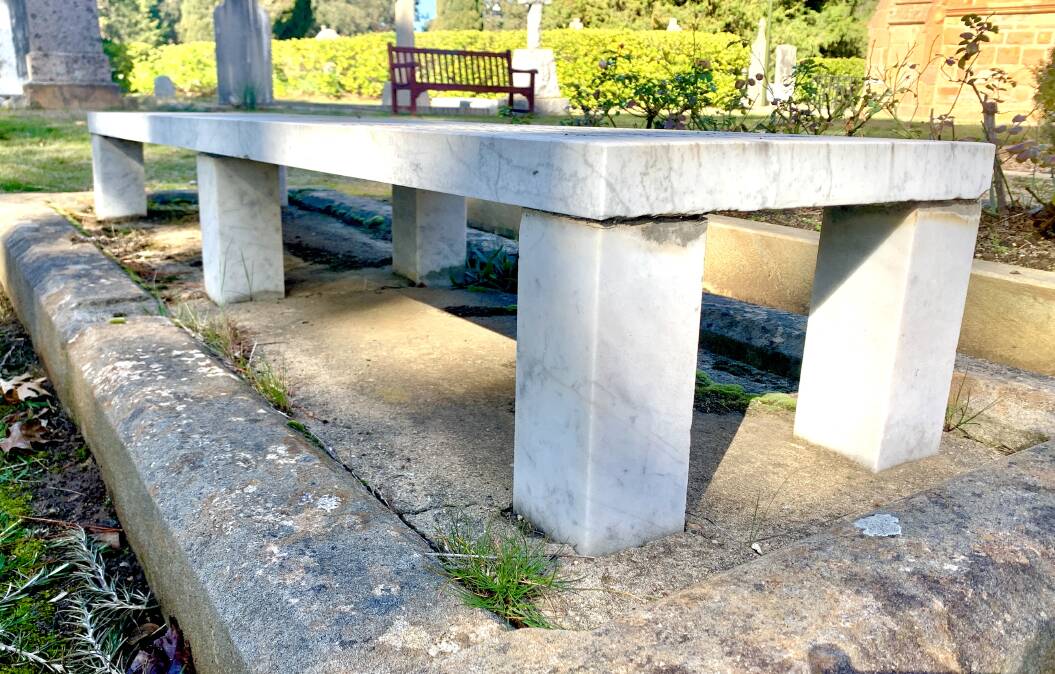
Flying Officer Ewen's last few hours alive must have been terrifying.
Researcher Susan O'Leary reports, "He was found half-buried in the wreckage with horrific injuries and his head crushed against the dashboard. He was still alive and strapped to his seat with his right foot caught under the rudder controls. He was trying to say something but couldn't get any words out." Heck.
Rescuers raced to the scene and extracted poor Ewen and with his body covered in blood and oil rushed him to the temporary emergency military hospital that had been set up at Telopea Park School to support the thousands of troops involved in the opening festivities. Later in the day he was transferred to the Canberra Community Hospital in Acton where he died at 7pm.
Although the big crowds expected for the opening didn't materialise, it was still a horrific scene for the many onlookers. One spectator, Mrs Garcia from Sydney, was so shocked she suffered a heart attack and died. Really.
Remarkably, despite several plane crashes associated with the visit of the Duke and Duchess of York to Australia, a couple of days later, at Ewen's funeral at St John's in Reid, two RAAF planes provided an escort for their fallen comrade. Talk about tempting fate. Furthermore, after The Last Post was played, two low-flying civil aeroplanes attempted to drop wreaths on his grave. One of the wreaths missed its target and became stuck in a pine tree and a nearby worker had to scramble up a ladder to retrieve it. The wreath simply stated, "From his dearest friend in New Zealand". Susan hypothesises, "maybe this friend was the love of his life".
In 1928, Ewen's parents travelled from New Zealand to visit their son's grave and to place a marble stone benchtop over it. I've never seen such a tomb elsewhere. Have you? Was it to signify that Ewen was a creature of the air not of the ground? Someone must know.

WHERE IN THE REGION?
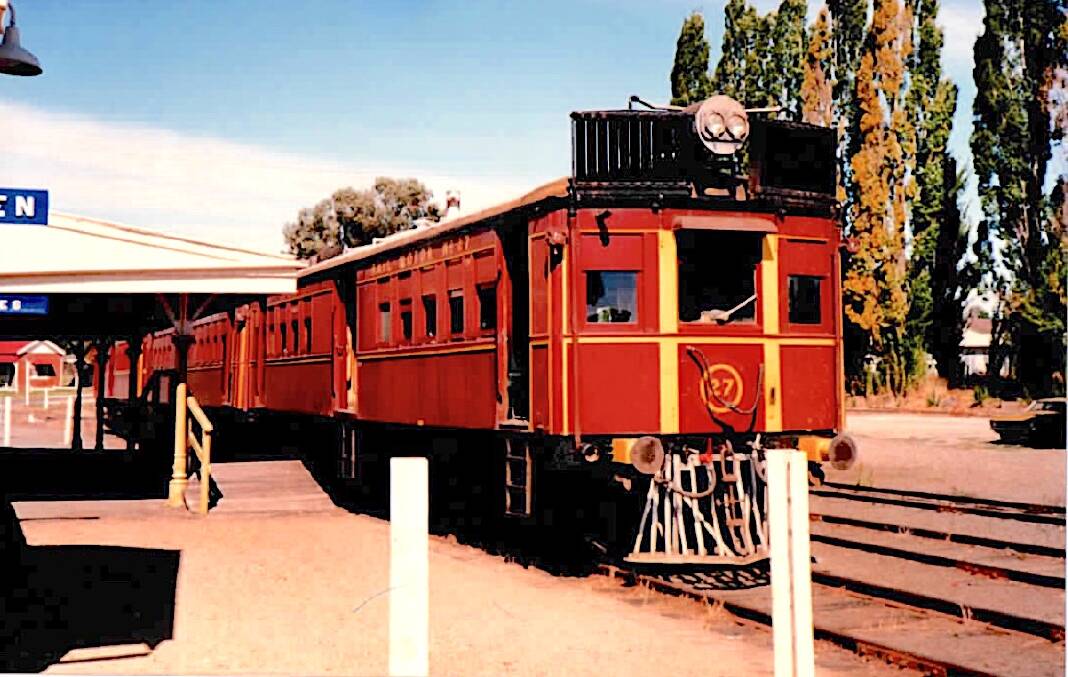
Rating: Medium
Clue: Possibly Australia's "shortest" railway platform
How to enter: Email your guess along with your name and address to tym@iinet.net.au. The first correct email sent after 10am, Saturday August 6, wins a double pass to Dendy, the Home of Quality Cinema.

Last week: I'm bitterly disappointed that not one single reader recognised this tree with the rectangular slice mysteriously hacked out of its trunk, located just behind Cobby Street (Jackson is the nearest cross street) in Campbell. While admittedly somewhat off the beaten track, the more adventurous urban explorer would likely encounter it if walking the lower slopes of the Mt Ainslie Nature Reserve. I know you can do better this week.
Doomed plane
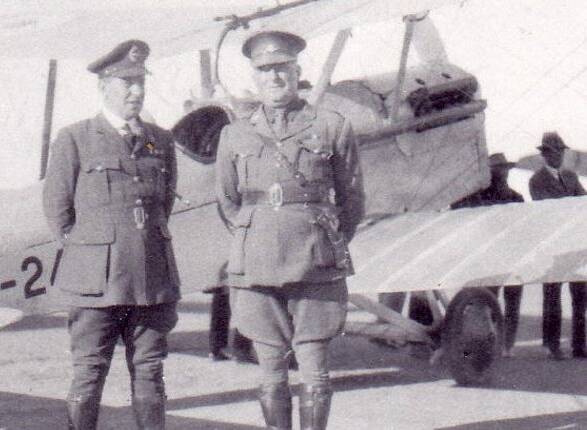
When he crashed, Ewen was flying a Scout Experimenter or SE5A biplane.
In 1919, as a thank you for our assistance in World War I, Great Britain gifted 128 aircraft to Australia. These planes, which included 35 SE5As, formed the foundation of the Royal Australian Air Force.
According to researcher Susan O'Leary, "The SE5A was a single-seater, single-engine World War I fighter plane made largely from wood and cloth and was later called the Spitfires of World War I," adding, "16 Australian Flying Corps pilots became aces in World War I flying these planes."
The aircraft were transported to Australia in flat packs and assembled locally.
Somewhat tellingly, of those 35 SE5As gifted to Australia, 10 were lost in crashes, and 14 were never assembled and left in storage.
The balance were used as training aircraft until 1928 when they were considered obsolete - less than 12 months after Ewen's fatal crash.
CONTACT TIM: Email: tym@iinet.net.au or Twitter: @TimYowie or write c/- The Canberra Times, GPO Box 606, Civic, ACT, 2601






